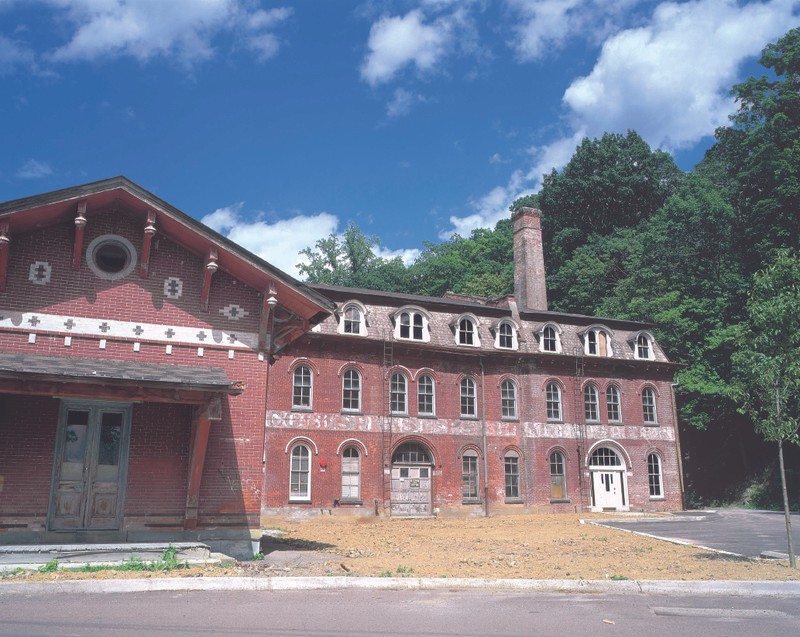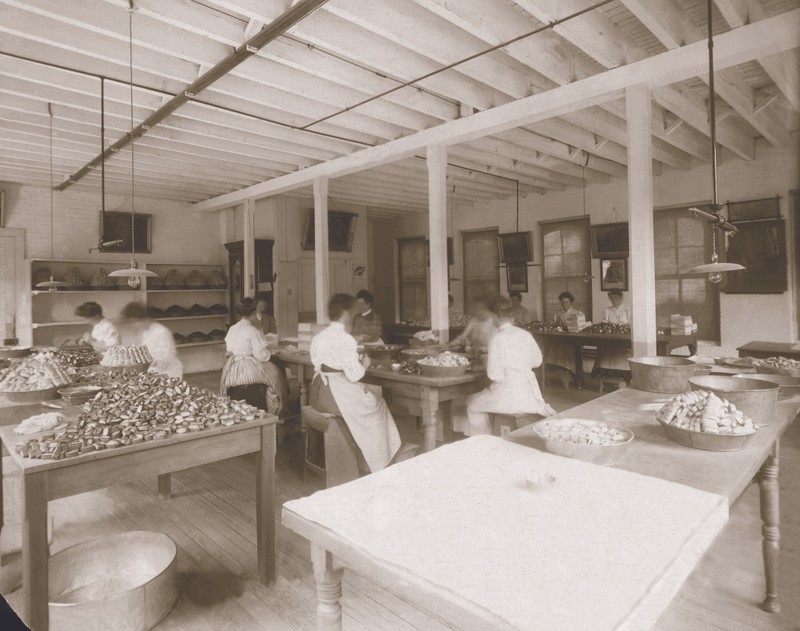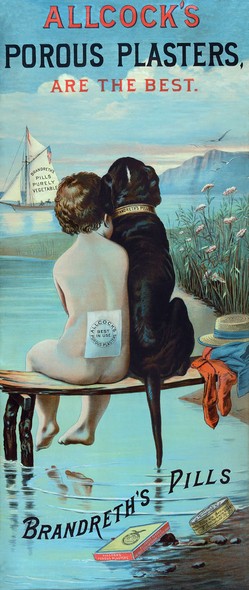Brandreth Pill Factory
Introduction
Text-to-speech Audio
Images
Brandreth Works

Workers Packing Pills

Poster for Allcock's Porous Plasters

Brandreth Works in the 1970s


Backstory and Context
Text-to-speech Audio
During the era in which Brandreth began his business, many people believed that illness was the result of "impurities" in the blood and that purging with laxatives was the most effective way rid the body of them. (Williams, 241) At only 19, Brandreth bought out the interests his relatives had in the business and relocated from Liverpool to London. While in London, Brandreth discovered the benefits of advertising, which mostly revolved around testimonials from satisfied customers to bring in new customers. (Williams, 241)
In 1835, at 25, he left England with his wife and three children and started up his business in New York City. He invested a considerable amount of capital in advertisement, in the form of newspapers and handbill advertising. Soon the business became a great success. He began to purchase property along the Hudson River in northern Sing Sing (now Ossining), where he built facilities to produce and distribute his products in 1836. Following the death of his wife in May of that year, he decided to move his family to live permanently in Sing Sing.
The biggest building of the Brandreth Works was built in 1872, when the business was doing very well. It was built in the Second French Empire style, at this time this style was at the height of its popularity. Originally, it was constructed as a one-story Italianate wing, containing an office and machine shop, was added a few years later. It was considered a good place to work by its employees. (Williams, 242-243) Benjamin and his family members after him, always treated the employees well. Many of the workers were women. Typically the company would manufacture medicine that was not rooted in medical science but Benjamin still believed that it was effective. One of his labels on his packages toted, "An universally approved medicine, which by its peculiar action cleanses the blood impurities, removes every pain and weakness, and finally restores the constitution to perfect health and vigor."(Williams, 241) Brandreth's pills were sold all over the United States and, eventually, all over the world. (westchesterarchives.com)
It did not take long for Brandreth to become a prominent figure in the Sing Sing community. In 1840, he became an American citizen and for a third time he married (a brief second marriage ended in divorce). His wife was Virginia Graham, who had worked in the factory, and they had 12 children, of whom 10 survived. Brandreth was active in Democratic politics, he served three years as president of the village and two terms in state senate. He was a parishioner and generous supporter of Trinity Episcopal Church, a trustee of two local banks and the Dale Cemetery Association, and a Mason. (Williams, 243)
At 71 years old Brandreth unexpectedly passed away due to a stroke in 1880, then the business was managed by his son, Franklin. It remained in the possession of the family throughout its existence. In the 20th century, the firm began to expand on what they manufactured, as government regulation of patent medicines and their advertising intensified.
The structure began to deteriorate and the land on which it stood was set to be redeveloped in 2007. For a period of time to save the structure, there was some consideration to repurpose the building. The local Historic Preservation Committee, gave the property local landmark status, keeping the building from being destroyed without permission. In 2015 the remaining structure of the pill factory was demolished by its owner Plateau Associates without a permit.
Cite This Entry
Danielle Juste on behalf of Westchester County Historical Society. "Brandreth Pill Factory." Clio: Your Guide to History. May 13, 2020. Accessed March 30, 2025. https://theclio.com/tour/1673/11/reverse
Sources
Williams, Gray. Picturing Our Past: National Register Sites in Westchester County. Elmsford, NY. Westchester County Historical Society, 2003.
Brandreth Pill Factory Documents, 1863-1900, Accessed May 12th 2020. https://westchesterarchives.com/ht/muni/ossVill/brandreth.htm.
Yasinac, Rob. Brandreth Pill Factory demolished, March 16th 2016. Accessed May 13th 2020. http://www.hudsonvalleyruins.org/rob/?p=2551.
Westchester County Historical Society
Westchester County Historical Society
Westchester County Historical Society
Westchester County Historical Society

